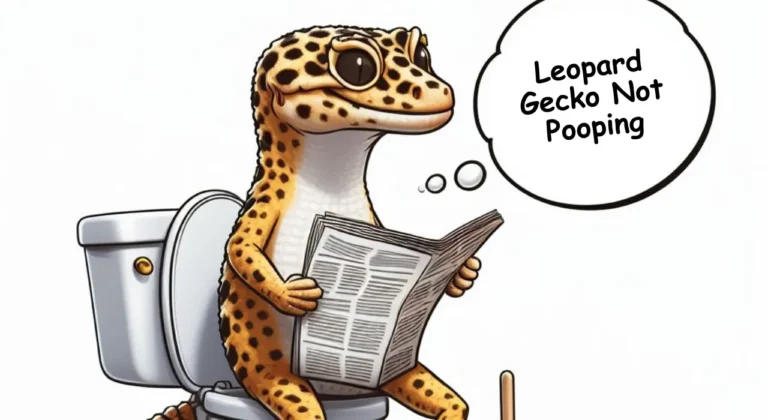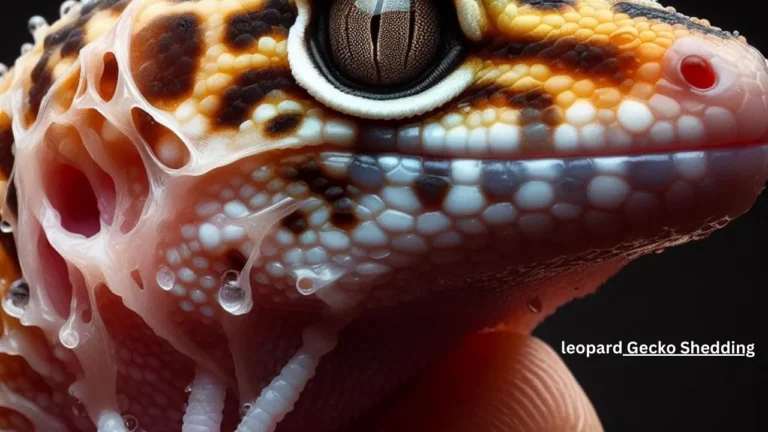5 Symptoms That Show That Your Leopard Gecko Is Dying
It’s hard to accept that your dear pet Is sick and slowly dying. When you observe certain symptoms you can tell if your leopard gecko is in his last time or not.
It’s really sickening for a gecko owner to watch its pet yearning. In this hard time, you should know exactly what the main reason is behind it. Is he sick? injured? Or living its final moments.
To know if it’s dying you tell it by observing signs like weight loss, lethargy, hollow eyes, not eating, lack of droppings, etc. The most observable sign of dying for every pet (including leopard gecko) is they stop eating. It’s like they know it’s their final moment.
We’ll discuss all these symptoms and signs thoroughly in this article and see if they are really dying or just sick and can be cured.
Signs that your leopard gecko is dying
I know it’s hard for someone to see his pet dying. But in this difficult time, you can do something good for your gecko and make it easier by knowing the signs. In some cases, you can also prevent the upcoming death by knowing the early signs. It helps to give him proper medical attention.
But before I start with the signs you should keep in mind one thing ‘Always consult your veterinarian if your gecko is sick.’
1. Weight Loss of the leopard gecko
The most observed sign is weight loss due to weak appetite or metabolic infection. It’s a concerning sign and indicates the serious condition of your pet.
It’s also possible due to infection in the appetite which leads to weight loss. The internal issues affecting the digestive system may also contribute to weight loss.
These are a few more reasons for the weight loss in leopard gecko
- Metabolic disorders
- Inappropriate Environment conditions
- Digestive issues
- Stress
- Old age
These reasons are enough to make a leopard gecko thin and sick. However, if weight loss is the only issue you’re seeing then it’s less concerning. By knowing the signs early you can cure their weight loss. But if your gecko is in its old age and near to death then it’s a clear sign that you should take care of him properly and make its last time easier.
2. lethargy in leopard geckos
If your gecko is really living its final time then abnormal tiredness or lack of energy is likely to be seen. It becomes less active than usual. As you know leopard geckos are typically alert creatures, but a lethargic gecko may mostly spend its time in hiding, displaying a reluctance to move or explore its enclosure.
It’s not always necessary that your gecko is showing laziness cause it’s dying, it may also arise due to environmental changes or some kind of illness.
Lethargy can be caused by illness, stress, improper temperature regulations, etc. If you find that your gecko is constantly lethargic and showing no activities for a long time then it’s best to show him to a veterinarian. A proper diagnosis can cure your dear pet. And if the vet suggests that it’s his final time that’s why it’s acting lethargic then it’s better to take proper care of it.
3. Lost of appetite
One thing that you’ll observe when your gecko is ill or dying is that it just stops eating. It’s a natural thing for all living beings they know it’s their final time including humans so they lose their appetite or say they lose their will to eat as well as live.
However, if the gecko is nearing the end of his life, underlying health issues may contribute to a loss of appetite due to metabolic functions, organ failure, or other health complications. It’s up to the owner to constantly monitor the sick gecko’s eating habits closely during these hard times.
It’s important to provide him with proper nutrition as it’s vital for supporting the gecko’s overall well-being. And all in all,l there are always vets who can guide you if you ask for suggestions.
4. Stress
In the final time of leopard gecko stress becomes a significant factor in its health. Just like other loving beings, the dying process can be really stressful for geckos as well and it fights with physiological changes and frequent discomfort.
The bodily functions start getting weak, the gecko gets less alert and the signs also include less sleep due to stress. With all these, the previously mentioned factors such as lethargy, loss of appetite, and reduced mobility make the life of the gecko worse.
The stress in geckos can be physical as well as emotional. It starts acting differently than its regular activities, seeking solitude, or displaying signs of distress.
What you can do is provide him with a quiet and comfortable environment and minimize the disturbance nearby. It helps alleviate some stress during this critical time.
5. Deteriorating body
Last but not least, these are the most easily detectable symptoms to tell if your leopard gecko is dying. The first thing you may notice is the gecko’s sunken eyes and wrinkled skin, showing a physical representation of the internal struggle. It starts happening when the gecko stops eating and drinking.
Another sign is its labored breathing. Breathing in a healthy gecko sounds rhythmic and effortless but when it starts getting weak you’ll notice it changes into a strained melody, signaling potential respiratory challenges.
The skin of a dying gecko that was once supple and vibrant in its younger days starts witnessing a myriad of issues from lesions and sores to abnormal colorations. The process of shading also becomes more difficult, what was once normal and natural. Meanwhile, the unusual postures, tremors, and difficulty in movement show that the gecko is suffering from musculoskeletal or neurological complications.
Collectively, all these health issues show the leopard gecko’s journey towards the end of his life. Make sure to keep the surroundings quiet and comfortable, so your gecko can live its final moments peacefully.
Tips to take care of a dying leopard gecko
In these difficult times, it’s crucial to provide a supportive and comforting environment. Creating a serene atmosphere for the gecko is the first step in reducing the stress. Even the little notices are enough to disturb a sick leopard gecko. It starts getting jumpscare.
With a peaceful environment, temperature and light intensity control is also a necessity to take care of. Maintain an optimal temperature range and lower the intensity of the direct light( it’s better if you can avoid the direct light reaching the gecko). It supports the gecko’s weakened body functions properly.
Make the resting area of the sick gecko comfortable by putting some comfortable padded bedding.
To keep the gecko hydrated — as they stop drinking when they’re sick— use a shallow dish of water or a gentle dropper for assistance.
If the shredding becomes hard for him then a humid hide with motion substrate aids in softening the old skin and easing the process.
Eating issues in these times are common to observe. Make sure to provide him with his favorite food and avoid force-feeding, as this may cause additional stress.
Seek the veterinarian’s advice and guidance on the leopard gecko’s condition, potential pain management, and personalized care recommendations. In these hard times, emotional support can become quite a useful remedy. Make sure you’re showing him enough attention through your presence during this delicate phase.



